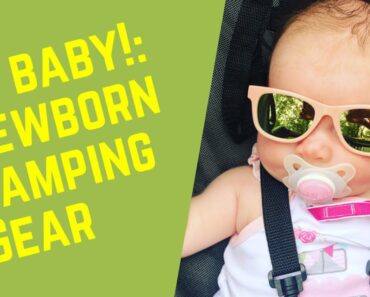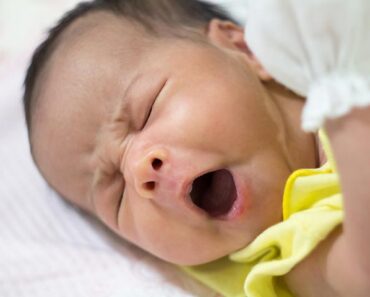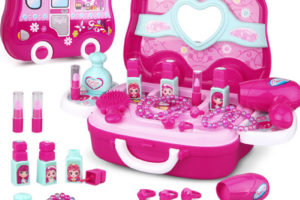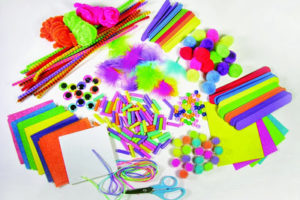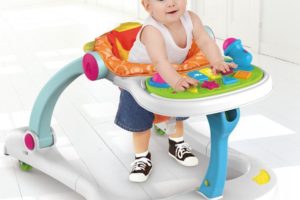Image: Shutterstock
Refined sugar is high in calories and has zero nutritional value. Therefore, parents have been increasingly looking for alternative natural sweeteners, such as maple syrup for babies. Maple syrup is a uniquely flavored, natural sweetener obtained from the sap of sugar maple trees (1).
Pure maple syrup contains several trace minerals and antioxidants that may benefit the baby’s health. But, it’s also high in sugar. In such a scenario, is maple syrup a good choice for babies? What is the right age for adding maple syrup to the baby’s weaning diet?
This post gives you an insight into the safety of maple syrup for babies, the right age to feed it to your baby, its possible benefits, and potential health risks.
Is Maple Syrup Safe For Babies?
When compared to honey, maple syrup is safer. Maple syrup directly comes from the sap inside the maple tree, making it free of botulinum spores, which often contaminate honey. Additionally, collected sap is concentrated by heating it until the water in the syrup evaporates (2). This process leaves no possibility for any spores to thrive, preventing the risk of infant botulism.
Yet, experts recommend against using added sweeteners, such as maple syrup, for babies under 12 months of age (3). It is because when the sap is collected, it is less sweet. However, during the processing, the syrup turns sweeter and has almost the same calories as white or refined sugar (2). Therefore, if you feed maple syrup to babies, it may cause issues, such as excessive calorie intake.
Thus, you should avoid feeding maple syrup to babies. However, if you still wish to use maple syrup for your baby, consult your pediatrician. Once you get a go-ahead nod from them, use maple syrup in moderation as a part of a healthy, well-balanced diet.
Nutritional Composition Of Maple Syrup
The concentrated maple syrup formed after heating the maple sap is filtered, bottled, and graded based on its density, translucency, and flavor (2) (4). The lighter the syrup’s color, the higher its grade. However, a higher grade does not indicate better nutritional value.
On average, a tablespoon of pure maple syrup gives the following nutrients (2).
Nutrients | Amount |
Energy | 50 kcal |
Potassium | 35 mg |
Calcium | 21mg |
Sodium | Less than 2mg |
Source: Food And Agriculture Organization
Maple syrup also contains a trace amount of zinc, magnesium, and iron (5). It even contains some phytochemicals and phytohormones that may impart some health benefits over time (6).
Pure maple syrup is 100 percent concentrated maple sap. It should have no additives, such as preservatives and food coloring (4).
Is Maple Syrup Beneficial In Any Way?
Maple syrup contains trace amounts of minerals, antioxidants, and phytohormones that may offer some health benefits in the long term. For instance, a recent animal study highlighted the hepatoprotective effects of maple syrup (7). Another study demonstrated that maple syrup contains polyphenols, such as Ginnalins A-C, which have cancer-protective effects (8). A study noted that maple syrup has antioxidant effects, which can counteract free radical damage and promote overall health (9).
Several animal studies highlight the benefits of maple syrup, but more specific research, especially on humans, is warranted. Also, these benefits don’t outweigh the fact that maple sugar is high in sugar, which is a risk factor for several health problems, such as type-2 diabetes. Therefore, maple syrup can be considered slightly better than refined sugar. But, just like any other sweetener, its intake must be kept within healthy limits.
Potential Health Risks Of Maple Syrup
Maple syrup, when consumed in moderation, is unlikely to cause any health issues. However, if its intake is done in excess, the high amount of sugar in maple syrup can cause energy surplus or excess calorie intake leading to unwanted weight gain.
The extra weight over time can lead to lifestyle-related disorders, such as type-2 diabetes and hypertension. The high sugar content of maple syrup may also lead to dental caries and tooth decay in toddlers (10) (11).
Precautions To Take While Using Maple Syrup For Toddlers
Below are some vital safety measures to observe while using maple syrup for toddlers.
1. Consult your pediatrician to know the right time to introduce maple syrup to your baby or toddler. Most healthy babies can consume sweeteners, such as maple syrup, once they are 12 months old.
2. Buy pure, organic maple syrup from a trusted manufacturer and reliable seller to ensure the product is premium quality and is adulteration-free.
3. While purchasing maple syrup, check the ingredient list carefully. Some commercial maple syrup may have added sugar and other ingredients, which indicates that the syrup isn’t pure.
4. Begin feeding one-fourth to half a teaspoon of maple syrup initially. Remember, concentrated maple syrup is quite sweet, so start with minimum amounts. Once the toddler adjusts to its taste and digestibility, gradually increase the quantity to no more than a tablespoon.
5. Wait three to five days between introducing maple syrup and other new food. It will help rule out the allergy or intolerance that maple syrup might cause. Most healthy toddlers can digest maple syrup comfortably. But, if the toddler looks uncomfortable after ingesting maple syrup, discontinue feeding immediately. Reintroduce after some time and note the toddler’s reaction. If the toddler still experiences discomfort, stop feeding maple syrup and consult a pediatrician.
6. Maple syrup allergy is rare yet possible. So, if your toddler is allergic to maple syrup, they are highly likely to exhibit symptoms, such as:
- Itching on the skin and rash development (hives)
- Itching and swelling of the mouth and throat
- Abdominal pain
- Wheezing and coughing
- Nasal congestion
- Difficulty breathing
- Anaphylaxis, a severe allergic reaction requiring immediate medical attention
7. Add maple syrup in small amounts to foods, such as porridge and smoothies. You can also use it as a spread on waffles and pancakes. Use maple syrup in several ways, but remember to follow moderation. Also, avoid using maple syrup frequently as feeding it may alter a toddler’s taste preferences.
8. Consult a doctor or traditional medicine expert before using maple syrup as an ingredient in any home remedy.
9. Store pure maple syrup in a tightly sealed container in the refrigerator. Sealed pure maple syrup can stay good for up to one year in the fridge. If stored in plastic containers, use maple syrup within three to six months to prevent quality loss.
10. Store any open maple syrup away from foods with a strong odor as maple syrup can pick their smell. Consume maple syrup stored in an open container within a few days.
Healthy Sugar Alternatives For Babies And Toddlers
Feeding maple syrup to toddlers occasionally is best, especially when you have healthier alternatives.
- Fruits, fresh and dried, turned into puree can act as excellent sweeteners. They give your baby and toddler umpteen nutrients and add flavor to different foods. Babies older than six months can consume fruits as a sweetener in various dishes.
- Jaggery is obtained from concentrated date palm or sugarcane juice and contains trace minerals and bioactive compounds. You can add jaggery powder to foods or make its syrup before adding it to recipes. Babies older than six months can consume jaggery safely.
- Honey is a natural sweetener and contains trace minerals and antioxidants that may offer health benefits upon continuous use. However, since honey poses a risk of infant botulism, it shouldn’t be fed to babies younger than 12 months in any form.
- Stevia is a plant-based sweetener with zero calories and is 250 to 300 times sweeter than sucrose (table sugar). Use highly pure stevia leaf extracts over stevia leaf or unrefined stevia extract (12) (13).
All these sweeteners can substitute sugar effectively, yet they must be consumed in moderation. Excess consumption of any food, even when healthy, may raise health concerns.
Maple syrup is a natural sweetener good to use in moderation. Most healthy babies can begin consuming it once they are aged 12 months. However, if you wish to use maple syrup earlier than 12 months, consult a pediatrician. You can use maple syrup for toddlers by making it a part of a well-balanced diet. Add a teaspoon of maple syrup to porridge or pour it over waffles to let your toddler enjoy maple syrup’s unique flavor.



